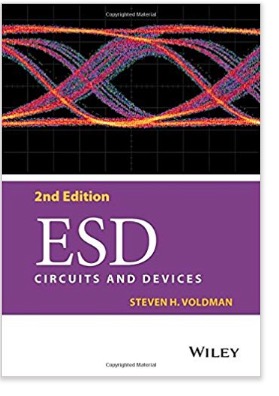Recent Posts
Circuitry Provides Robust ESD And Transient Protection For Automotive CAN Bus, CAN-FD And CAN Bus Transceiver Nodes
Posted by on
 Semtech (USA) has launched the µClamp2492SQ chip, which is AEC-Q100 compliant. The 24-V transient voltage protection array is optimized to safeguard automotive CAN Bus nodes from electrostatic discharge (ESD) and overvoltage transient threats. It features an 18-pF capacitance.
Semtech (USA) has launched the µClamp2492SQ chip, which is AEC-Q100 compliant. The 24-V transient voltage protection array is optimized to safeguard automotive CAN Bus nodes from electrostatic discharge (ESD) and overvoltage transient threats. It features an 18-pF capacitance.
To sufficiently implement ESD immunity, CAN Bus nodes require ESD protection circuits with 24-V operating voltage and a low ESD clamping voltage to protect the nodes from the harsh electrical environment in a vehicle. The two-line µClamp2492SQ offers a low ESD clamping voltage while reducing loading capacitance.
The component is housed in an SOT-23 3L package and provides two lines of robust transient protection. The part exceeds the IEC 61000-4-2 ESD immunity standards, offering an industry-leading protection level of ±30-kV air and ±30-kV contact, and is qualified to Grade 1 of the AEC-Q100 Automotive Standard. The product is lead-free, and it is RoHS/WEEE compliant.
ESD: Circuits and Devices 2nd Edition provides a distinct picture of layout and design of digital, analog, radio frequency (RF) and power applications for protection from electrostatic discharge (ESD), electrical overstress (EOS), and latch-up phenomena from a generalist view and design synthesis practices presenting optimum solutions in advanced technologies.
The new features in this 2nd edition are:
- Expanded treatment of ESD and analog design of passive devices of resistors, capacitors, inductors, and active devices of diodes, bipolar junction transistors, MOSFETs, and FINFETs.
- Increased focus on ESD power clamps for power rails for CMOS, Bipolar, and BiCMOS.
- Co-synthesizing of semiconductor chip architecture and floor planning with ESD design practices for analog, and mixed-signal applications
- Illustrates the influence of analog design practices on ESD design circuitry, from integration, synthesis, and layout, to symmetry, matching, inter-digitation, and common centroid techniques.
- Increased emphasis on system-level testing conforming to IEC 61000-4-2 and IEC 61000-4-5.
- Improved coverage of low-capacitance ESD, scaling of devices and oxide scaling challenges.
ESD: Circuits and Devices 2nd Edition is an indispensable reference to ESD, circuit & semiconductor engineers and quality, reliability &analysis engineers. It is also valuable for graduate and undergraduate students in electrical engineering, semiconductor sciences, microelectronics, and IC design.
 Loading... Please wait...
Loading... Please wait...

